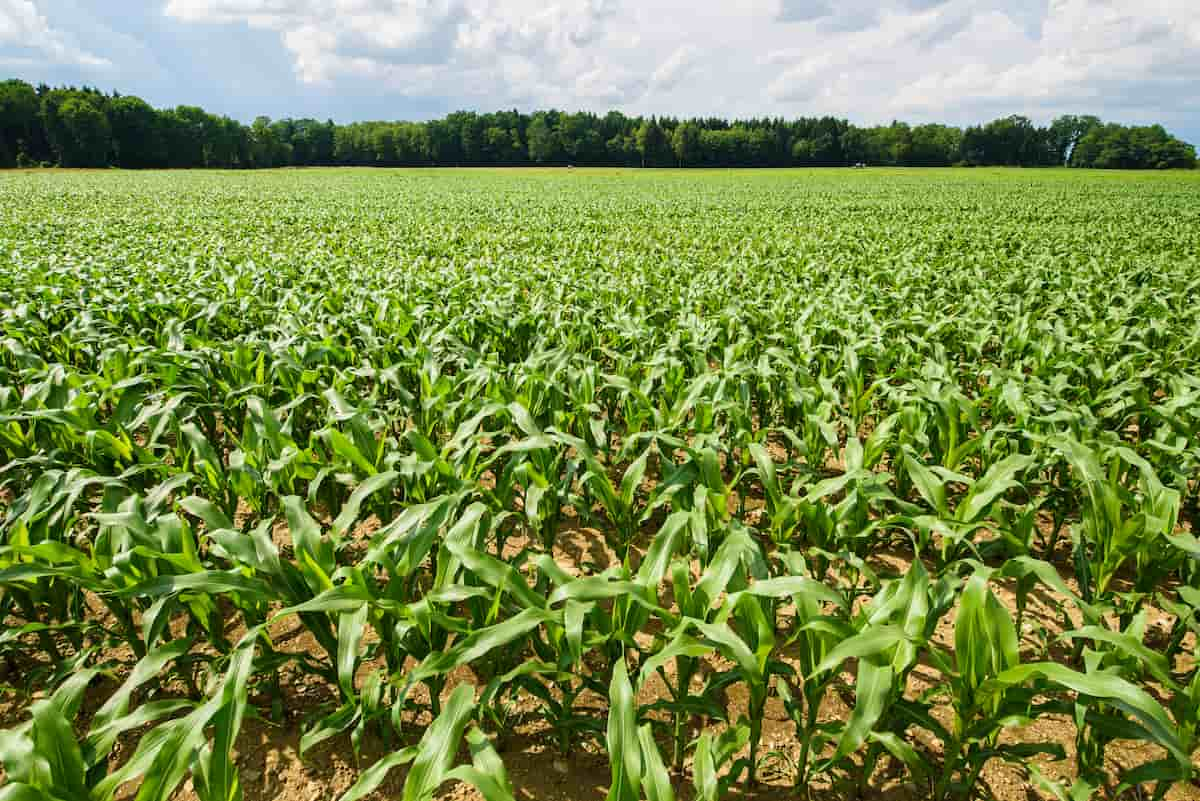Corn is a versatile crop grown for various purposes, including food, feed, and biofuel. In Texas, corn farming is a lucrative business opportunity for those interested in agriculture. This step-by-step guide will provide you with all the essential information you need to start a successful corn farming operation in Texas, from planting to harvesting.

How to Start Corn Farming in Texas
Understanding the Texas Climate for Corn Farming
Texas has a diverse climate, with various regions suitable for corn farming. The primary corn-producing areas are the High Plains, the Rolling Plains, the Blacklands, and the Coastal Bend. The average growing season ranges from 190 to 260 days, depending on the region. The ideal temperature for corn growth is between 60 and 95 degrees Fahrenheit, and corn requires an annual rainfall of 20 to 30 inches. The Texas climate typically provides adequate sunlight, temperature, and rainfall for corn production, but it is essential to monitor weather conditions for optimal growth.
Choosing the Right Corn Variety
Selecting the appropriate corn variety for your region is crucial for a successful harvest. Consider factors such as maturity period, drought tolerance, pest resistance, and yield potential when choosing a variety. Texas A&M AgriLife Extension offers a list of recommended corn hybrids for various regions of Texas. In Texas, various corn varieties are suitable for different regions and growing conditions.
Some popular choices include Pioneer’s P2089YHR, which offers excellent drought tolerance, and Dekalb’s DKC62-20RIB, known for its high yield potential. The Bt corn hybrid AG 7078, from AgriGold, provides strong resistance to pests, while the early maturing LG Seeds LG5618STXRIB is ideal for areas with shorter growing seasons. Lastly, the versatile Terral REV 28HR20 has a strong disease-resistance package and consistently high yields across diverse environments.
Field Preparation
Proper field preparation is essential for a successful corn crop. Test your soil for soil nutrient information. This information will help you identify nutrient deficiencies and adjust your fertilizer application accordingly. Corn grows best in well-draining soils with a pH between 5.5 and 7.0.
Remove any weeds or crop residue from the previous season and plow the soil to a depth of 8 to 10 inches to promote root development. Based on your soil test results, incorporate any necessary soil amendments, such as lime or gypsum. Additionally, consider installing an irrigation system if your area is prone to drought or inconsistent rainfall.
Equipment Needed for Corn Farming
- Tractor: A tractor is essential for plowing, disking, and cultivating the soil.
- Planter: A corn planter allows for precise seed placement and spacing, ensuring even germination.
- Sprayer: A sprayer is necessary for applying herbicides, pesticides, and fertilizers.
- Irrigation equipment: Depending on your region, irrigation equipment may be necessary to provide adequate water for your corn crop.
- Combine harvester: A combine harvester harvests and thresh the corn at the end of the growing season.
- Grain cart and storage: Proper storage is essential for preserving the quality of your harvested corn.
Planting
The ideal planting time for corn in Texas is between late February and early May, depending on the region and variety. Plant when soil temperatures reach at least 50 degrees Fahrenheit, as corn seeds require warm temperatures for germination. Plant the corn seeds at a depth of 1.5 to 2 inches, and space them 4 to 6 inches apart within rows. Row spacing should be between 30 and 40 inches, depending on your equipment and the corn variety. Use a planter to ensure precise seed placement and uniform spacing.
In case you missed it: How to Start Sorghum Farming in Texas: A Step-By-Step Production Guide for Planting to Harvest

Fertilization and Pest Management
Fertilise corn according to your soil test findings. The development of corn requires a significant amount of several nutrients, the most important of which are nitrogen, phosphorus, and potassium. Apply a starter fertilizer at planting, and follow up with additional side-dress applications of nitrogen as needed throughout the growing season.
Integrated pest management (IPM) is essential for controlling weeds, insects, and diseases that can negatively impact your corn crop. Monitor your fields regularly for signs of pests and take appropriate action when necessary. Use a combination of cultural, mechanical, biological, and chemical methods for effective pest control.
Irrigation and Water Management
Irrigation is crucial in areas with inconsistent rainfall or during periods of drought. Corn requires approximately 20 to 30 inches of water per growing season, with the most critical period being during pollination and grain fill. Implement an efficient irrigation system, such as a center pivot or drip system, to provide consistent water to your corn crop. Monitor soil moisture levels and adjust your irrigation schedule to prevent water stress.
Scouting and Monitoring
Regular scouting and monitoring of your cornfields are crucial for identifying potential issues early and taking corrective action. Keep a close eye on your crop’s growth stages, pest populations, and overall health. Consult with local extension agents or agronomists for assistance in identifying and addressing any problems that may arise during the growing season.
Time Taken from Seed to Harvest
The time from planting to harvest varies depending on the corn variety and environmental conditions. In general, corn takes between 60 and 100 days to reach maturity, with early-maturing varieties taking less time than late-maturing ones. Pay close attention to your corn’s growth stages and the specific characteristics of your chosen variety to determine the appropriate harvest time.
Harvesting
When your corn reaches physiological maturity, indicated by a black layer at the base of the kernels and a moisture content of around 30-35%, it is ready for harvest. Use a combine harvester to collect and thresh the corn. To minimize grain loss and damage, the combine should be set to the appropriate settings for your corn variety and field conditions.
Post-Harvest Management
After harvest, allow the corn to dry to a moisture content of 13-15% before storing it in a well-ventilated, temperature-controlled environment. Proper corn storage prevents deterioration and pests. Additionally, consider implementing a crop rotation plan to minimize disease pressure and improve soil health for future corn crops.
In case you missed it: How to Start Cotton Farming in Texas: A Step-By-Step Production Guide for Planting to Harvest

Conclusion
By understanding the Texas climate, choosing the right corn variety, and implementing effective field preparation, planting, fertilization, pest management, irrigation, scouting, and harvesting techniques, you can establish a successful corn farming business in Lone Star State.
- Feed Your Flock for Less: Top 10 Tips to Save on Chicken Feed
- Ultimate Guide to Ossabaw Island Hog: Breeding, Raising, Diet, and Care
- Hatching Answers: The Top 10 Reasons Your Chickens Aren’t Laying Eggs
- Eggs and Economics: Breaking Down the Cost of Raising Backyard Chickens
- Defend Your Greens: Proven Methods to Keep Iguanas Out of Your Garden
- Ultimate Guide to Cinnamon Queen Chicken: A Comprehensive Guide for Beginners
- Ultimate Guide to California Tan Chicken: Breeding, Raising, Diet, Egg-Production and Care
- Ultimate Guide to Marsh Daisy Chicken: Breeding, Raising, Diet, and Care
- 10 Types of Chicken Farming Businesses You Can Start for Profits